There is no such thing as one size fits all, especially when it comes to cars. America is a land where the automobile gave ultimate freedom to the free. It’s a place where one can drive across the continent if he so desires. Cargo capacity is one of the most important metrics for those in the market for a new car, which got me thinking about something.
Cars with the Most Cargo Capacity You Can Buy in the United States
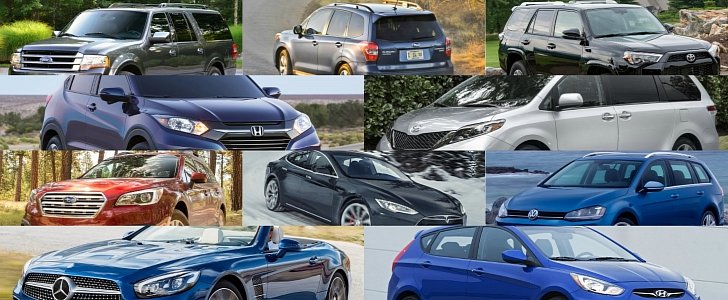
What cars on sale today have the biggest trunks and what cars offer the best cargo capacity with the seats folded into the floor? Be that as it may, big cars don’t necessarily equal big trunks. There will always be surprises out there, offering gaping cargo holds for all bits and bobs where one would normally expect an average-sized trunk.
While searching for the SUVs, crossovers, sedans, hatchbacks, drop-top convertibles, and longroofs with the most cargo space, we omitted pickup trucks and cargo vans for a reason. This type of vehicles can be loaded in more configurations than passenger cars. In addition to that, workhorses and commercial vehicles are measured in payload rather than cubic feet.
In their respective segment, the following ten vehicles have the most cargo capacity with the seats in place and the most maximum luggage capacity with the seats folded down. Let’s get on with it:Full-Size SUV – Ford Expedition EL (42.6 CuFT and 168 CuFT / 1,206 liters and 4,757 liters)
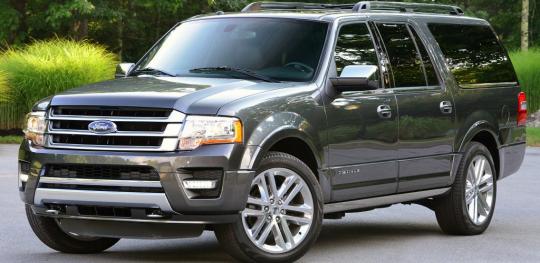
Yes, ladies and gentlemen. The unsung hero of maximum space comes in the form of the Ford Expedition EL. Compared to the normal Expedition, the EL model has a 12-inch longer wheelbase. This gives the Expedition EL the edge over the Chevrolet Suburban and virtually all other full-size SUVs.
Based on the Ford T platform, itself based on the P2 truck platform from the 2000s, the Expedition isn’t exactly a thrilling car. It’s a massive gas guzzler with the aerodynamic qualities of a brick. The selling point of the Expedition, especially in EL guise, is the can-do character on and off the beaten track.
42.6 cubic feet of cargo space with all the seats occupied is more than enough for all the family’s belongings. The best thing about the Ford Expedition in EL guise is that you don’t have to make compromises. Some interior trim feels nasty, though, despite the fact that prices start at $48,145.Mid-Size SUV – Toyota 4Runner (47.2 CuFT and 89.7 CuFT / 1,336 liters and 2,540 liters)
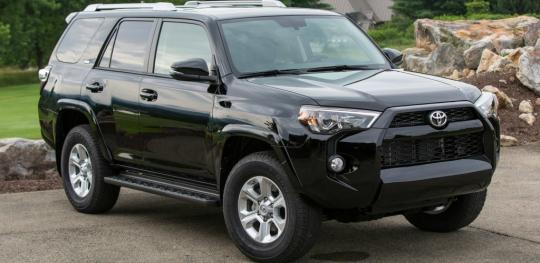
A solid choice in its segment, the Toyota 4Runner can keep its own in off-road situations. Potential buyers who plan to stick to the pavement, this isn’t the mid-size SUV you’re looking for. Those people who want acres of space and accommodation, on the other hand, needn’t look any further.
Starting at $33,810, the 2016 Toyota 4Runner offers body-on-frame ruggedness and lots of standard equipment. Power adjustments for the driver’s seat, Bluetooth phone connectivity, air conditioning, satellite radio, and a 6.1-inch diagonal Entune touchscreen infotainment system included.
I’m not too enthusiastic about the hard-plastic dashboard and fake metal trim, to be frank. Nevertheless, the 4Runner has a purposeful thing going on, a utilitarian design that can’t be paralleled by any mid-size segment rivals. A word of warning, though – the third-row seats of the 4Runner SR5 and Limited models are inhospitable to adults unless they’ve mastered the Lotus position.Compact SUV – Subaru Forester (34.4 CuFT and 74.7 CuFT / 974 liters and 2,115 liters)
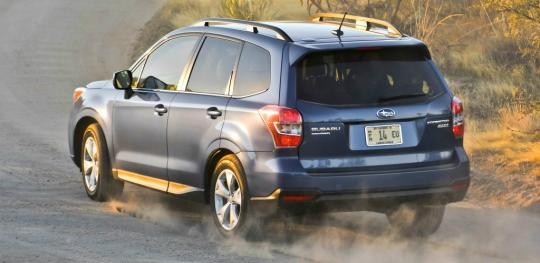
The Forester definitely isn’t the most sophisticated SUV in the compact segment, nor is the most fuel efficient. If you don’t mind little drawbacks such as the straightforward design of the cabin and a continuously variable transmission that can be jerky at times, then put the Subaru Forester on your shortlist.
Many automotive journalists have bashed the 2016 model year Subaru Forester for the standard 6.2-inch touchscreen infotainment system that knows how to HD Radio. Are they mad? I wonder if these guys also complain about the size of their phones, especially when they use the navigation app.
Something the automotive media didn’t complain about is the space with or without the seats up, as well as the engine lineup. Be it the 2.5-liter boxer or the 2.0-liter turbo boxer, you can’t go wrong with the Forester. As an added bonus, even the $22,395 entry-level Forester comes with Symmetrical AWD.Subcompact SUV – Honda HR-V (24.3 CuFT and 58.8 CuFT / 688 liters and 1,665 liters)
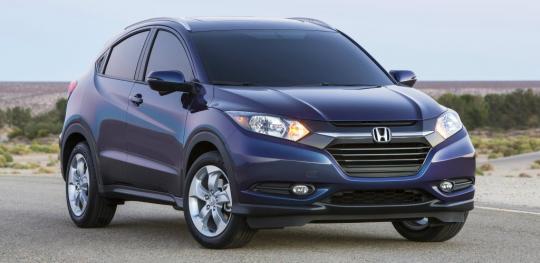
When it comes down to affordability, the Honda HR-V is a pretty cheap subcompact crossover. Starting at $19,215, the HR-V offers up to 58.8 cubic feet for more than just the essentials. Provided that you fold down the rear seats and the passenger-side front seat, you’ll be able to fit a kayak in there.
On Mother’s Day, you can buy a potted tree for the most important woman in your life (other than your S.O.) and store it upright in the HR-V. All you have to do is fold the seat bottom up for almost 4 feet of vertical space. The Jeep Renegade may be more competitively priced than the Honda HR-V, but there’s a catch. The Honda model is far better equipped than the Jeep.
Curious about the key features of the entry-level Renegade? The list consists of four things I can hardly define as key features: the 1.4-liter turbo engine, premium cloth seating, personalized instrument cluster, and remote keyless entry. Nice effort, Jeep, but Honda offers so much more than that.Minivan – Toyota Sienna 7-Passenger (39.1 CuFT and 150 CuFT / 1,107 liters and 4,247 liters)

The 3.5-liter V6 engine and 6-speed automatic transmission could be a little more refined. The ride could be a little less on the rough. But these are minute niggles. When all is said and done, the Toyota Sienna continues to appeal to young families because it is the minivan equivalent of the Camry.
Its packing possibilities are as generous as it gets. From 39.1 cubic feet behind the third row to 150 cubic feet with the second and third rows folded flat into the floor, the Sienna is both minivan and van. The flexible seating also helps with offering the ideal combo of passenger comfort and cargo capacity.
The mid-cycle revamp of the Sienna made it better than before, partly because Toyota improved the quality of the interior and the ergonomics. It may not live up to its “Swagger Wagon” punchline because it’s dull, but the 2016 model year Toyota Sienna is all the minivan you could ever wish for.Full-Size Car – Tesla Model S (31.6 CuFT and 63.4 CuFT / 894 liters and 1,795 liters)
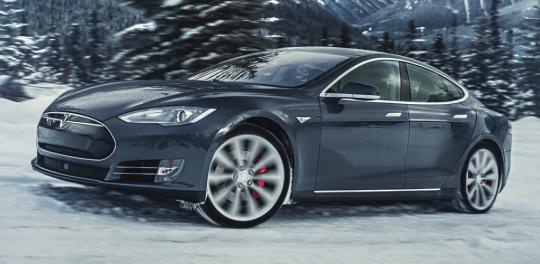
Having two trunks isn’t cheating. That’s what the Tesla Model S would say to explain why it has so much storage capacity. First there’s the front trunk (or frunk) – 5.3 cubic feet. Then there’s the trunk – 26.3 cubic feet. Fold the rear seats and the capacity increases to 58.1 cubic feet. Simple as that.
The Tesla Model S is a case in point that electric cars don’t have to be compromised as far as space is concerned. Then again, the real magic of owning a Tesla lies within its capabilities. 288 miles of range for the 90D isn’t too shabby. In fact, it’s the best EPA-rated range offered by an all-electric car.
As a large family sedan, the Tesla Model S is great. As an electric car, the Model S is a mold for all other manufacturers with electrified ambitions. The only downside to that beautiful body shell is that rear passengers taller than 5 feet 8 inches (1.73 meters) will brush their head against the headliner.Mid-Size Car – Subaru Outback (35.5 CuFT and 73.3 CuFT / 1,005 liters and 2,075 liters)
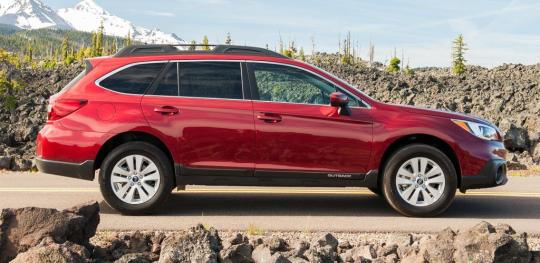
Go-anywhere, do-anything, carry-everything. The wagon version of the Legacy mid-size sedan is a pragmatic means of transportation with palpable car-folk sense. That’s what a few World Rally Championship titles, all-wheel-drive, and a boxer engine do for the small automaker from Japan that could.
Of course, everybody wants a rally-spec Impreza or a WRX STI with a big spoiler, but the Outback differs from its brothers because it is a car that one needs. The fair handling on pavement and the ability to scurry along unsurfaced roads come as fringe benefits of the family-oriented longroof.
So how come a generously equipped wagon as capable as the Outback starts at $24,995 in the United States? The explanation is Subaru of Indiana Automotive, Inc., the manufacturing facility where the Japanese outfit makes the Outback, Legacy, and Impreza, along with the facelifted Toyota Camry.Compact Car – Volkswagen Golf SportWagen (30.4 CuFT and 66.5 CuFT / 860 liters and 1,883 liters)
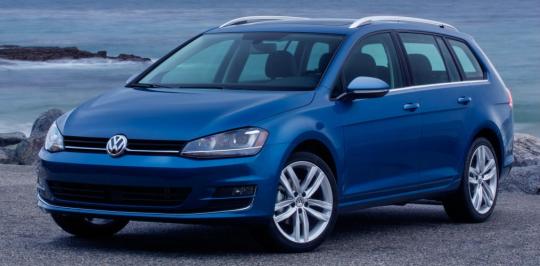
Ignore the whole Dieselgate scandal and focus on what the SportWagen is all about: great handling, premium-feeling materials, ample room for the rear passengers, a cavernous trunk, and excellent fuel economy from the 1.8-liter TSI turbocharged four-cylinder engine, the one unaffected by Dieselgate.
The highlight feature, however, is how much room is available behind the rear seats and with the seats folded flat. To understand how much junk you can fit inside the SportWagen, I’ll mention that its maximum luggage capacity trumps the Touareg SUV by 2.5 cubic feet. With the seats folded.
Don’t go for the entry-level S model ($21,625), though, because that one is more empty-handed than a bum. The next best thing is the SE, which is a lot more expensive: $27,025. A little too pricey for a compact longroof in my book, more than an abundantly appointed Mitsubishi Outlander SEL S-AWC.Subcompact Car – Hyundai Accent Hatchback (21.2 CuFT and 47.5 CuFT / 600 liters and 1,345 liters)
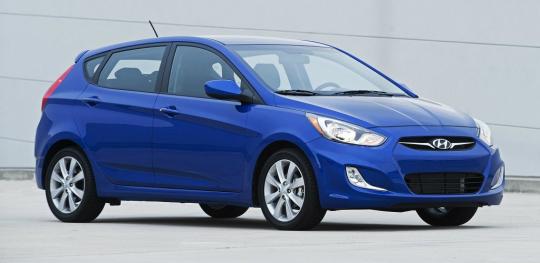
The sedan may be $250 cheaper than the hatchback, but the latter is worth the premium because it’s more practical. Hyundai is perceived as a cheap and cheerful brand since it set foot on American soil, yet the South Korean manufacturer didn’t cut corners with the Accent five-door hatchback.
From the get-go, Hyundai developed the Accent to feel bigger inside than it looks outside. That’s why the EPA boffins classified the sedan as a compact instead of a subcompact. The thing is, the sedan offers 13.7 cubic feet with the rear seats up while its hatchback brother boasts 21.2 cubic feet.
Packaging is the name of the game here. As if that weren’t enough, the Hyundai Accent Hatchback can do better with its maximum cargo volume of 47.5 cubic feet. For more cargo volume, you will have to go for the Honda Fit (52.7 cubic feet / 1,492 liters), a model that’s almost a grand more expensive. Convertible Car – Mercedes-Benz SL-Class (13.5 CuFT / 382 liters)
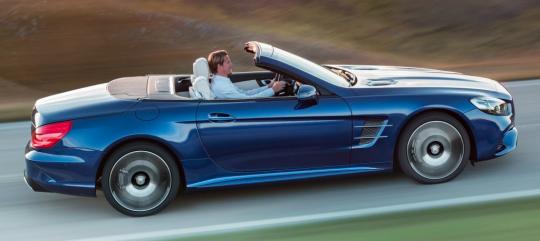
THIS! Now this is the biggest surprise of the list thanks to its cavernous trunk. The SL has always been more of a grand tourer rather than a sports car, except for the iconic 300 SL of the 1950s. Speaking of old bones, the W198 SL with the 3.25:1 axle ratio was the fastest production car of its day.
The current Mercedes-Benz SL, on the other hand, is far from that. As fate would have it, the SL gradually transitioned from being a race car with number plates road to a fat bruiser with a heavy retractable hardtop. I don’t mind the change of heart, though, because the SL is brilliant at what it does.
Going on a cross-country road trip by convertible also implies the need to store a pair of socks and a wash bag. Curiously enough, the SL offers the most luggage capacity of any other convertible on sale in the United States, even compared to the Euro-spec Mercedes-Benz S-Class Cabriolet (12.3 CuFT / 350 l).Fun fact:
The car with the least cargo capacity
in the list is the most expensive ($85,050 for the SL400).








